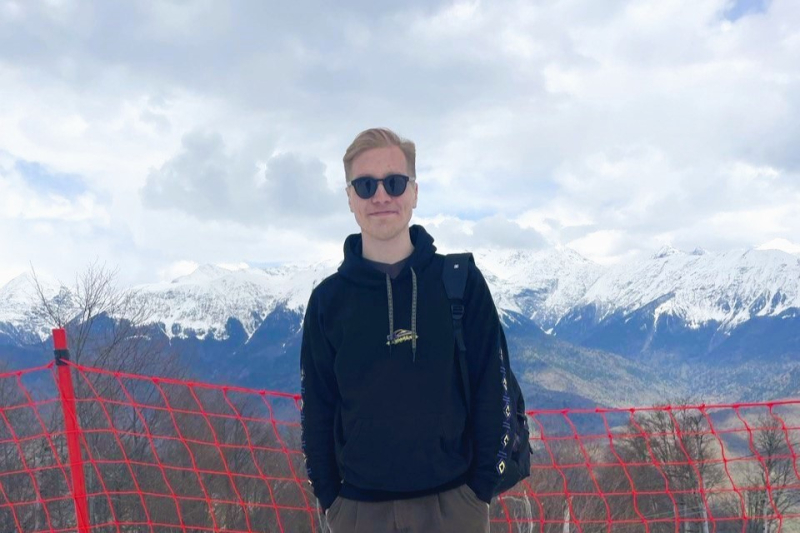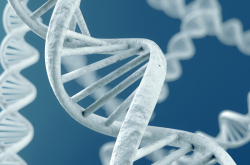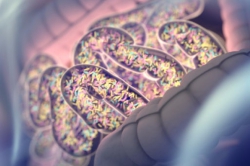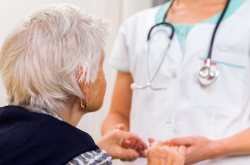As a student in your Master’s program, you got to pursue a different project every semester. What are some of the tasks that you completed?
I’ve tried my hand at many different things. First, there was a fundamental project on retroviruses that had once integrated into the cat genome. The sequences of these viruses can highlight the connections between feline species and breeds throughout their evolution.
Next, I joined an applied project focused on mutations in the NOTCH gene family among humans. We were tasked with writing an algorithm to predict the effects of amino acid replacements found in patients with neurological and oncological diseases.
Finally, I settled on a lipidomics project that made the core of my thesis, whichI am about to defend. In the future, I want to study single-cell transcriptomics – this subject was a major reason for my initial interest in bioinformatics. I was largely inspired by Konstantin Zaytsev’s lectures on the topic.
Recently, you went to a systems biology school at the Sirius educational and research center. What did you learn there?
In my six years of studies, I’d never participated in such programs, so this was my first experience of that kind. At the school, we received an overview of existing approaches to modeling biological systems – from gene regulatory networks and metabolic pathways to organs and systems in the body, as well as interactions between their components.
The course covered a lot of material and was very intensive because we only had two weeks to study it all. Every morning started with classes and when they ended, we would assemble in an improvised coworking space to do our homework.
This was a revelatory experience for me and my only regret is that I hadn’t applied for similar events earlier. Such opportunities are valuable not only for the knowledge you receive but also for the networking prospects they present. For instance, several participants of this school have now started a new research group. So, I have decided to participate in more schools in the future.

Participants of the school in Sirius. Photo courtesy of the subject
What was the selection process like?
I had to submit a letter of motivation and complete a test task which contained problems similar to the ones we later studied at the school. I didn’t solve all of them, but I got in. There were about 20 participants in total.
Did you get to apply what you’d learned at the school in your thesis?
Even though I haven’t gotten around to practical applications yet, the training I received did broaden my perspective on my research. I studied new approaches, such as dynamic and metabolic pathways modeling, and learned to combine transcriptomics with metabolomics. Equipped with this knowledge, I can bring my research further.
I am now about to defend my Master’s thesis on lipidomics of mitochondrial diseases, which are severe and mostly incurable genetic diseases ranging from migraines to neurodegenerative conditions. They are highly heterogeneous both clinically and genetically, which makes them hard to diagnose. We are looking for biomarkers of such diseases that would be able to facilitate this process. We have a cohort of 2,000 patients with 50 different mitochondrial syndromes. To analyze this data, we create a pipeline of different analysis methods in order to single out specific molecules – potential biomarkers characteristic of each syndrome. So far, we have identified two molecule families that include 17 specimens specific to one syndrome. Next, we are planning to study the lipids from these families.
How do you ascertain that you’ve found the correct molecules?
The biomarkers we’ve identified are candidates, so we cannot yet say that they are connected to a specific illness. We need to validate our results in a wet laboratory using chemical and biological methods. This would allow us to describe the structure of the molecule – for now we only have a class of substances. Laboratory experiments are always a crucial next step in bioinformatics research.

Artem Amosov. Photo courtesy of the subject
Do you already have agreements with any labs that will help you validate your results?
Yes, my supervisor is part of a large team that includes bioinformaticians, chemists, and biologists, so the data will be tested further.
You are about to graduate from your Master’s program. What will be your next step?
I am definitely planning to enter a PhD program and am currently looking for available opportunities. It might be possible to get a PhD position in Munich to join my supervisor there and continue our research on mitochondrial diseases.
Who is your supervisor and how did you start working together?
His name is Dmitrii Smirnov. Although he is not part of the teaching staff of the program, he presented his projects to look for students – such presentations from potential supervisors were held every semester. Among the several candidates who were interested in working with Dmitrii, I ended up getting this chance.
Where did you get your Bachelor’s degree?
I graduated from the Biology Faculty of St. Petersburg State University. I was a wet biologist and I kept working at the lab throughout my first year as a Master’s student and even at the start of the second one.
Why did you decide to switch from wet research to programming and bioinformatics?
As a Bachelor’s student, I had older friends from the Bioinformatics Institute who told me about the field and kindled my interest. Back then, I was studying the expression of specific genes, which is a very narrow area. I wanted to do research on a more systemic level. Strictly speaking, this isn’t bioinformatics, but rather omics approaches – the technologies that study processes on different levels: genome, transcriptome, proteome, and metabolome. I wanted to study the structure of the genome and the implementation of the information it encodes: how it is transformed into protein structure and affects the traits that can have an impact on disease diagnostics and treatment. Omics technologies are the main tool of genomic and post-genomic medicine, and bioinformatics is an important step towards harnessing these technologies.

Artem Amosov. Photo courtesy of the subject
What skills did you have to work on in order to get into your Master’s program?
Although I had a background in biology, I had no mathematical training. I took online courses in statistics and programming to prepare for the entrance exam at ITMO and I built on this knowledge as a Master’s student.
What career path do you see for yourself in the next 5-10 years?
As a Master’s student, I transitioned from fundamental studies to more applied research. I even attended interviews with a few pharmaceutical companies. This experience was enough to convince me that I am a researcher at heart, so that’s the career I’d like to pursue. I would like to teach, to have my own research group, and maybe one day even my own lab. I might not work with mitochondrial diseases, but I will definitely use multiomics approaches because there will be more and more data available for such studies thanks to the development of lab methods and mass screenings.
How is working at a company different from working in academia?
Both options present you with diverse research tasks, but I am not really into very applied studies. I’ve realized that I like to explain what I do to people – and you don’t need to do a lot of explaining for something applied.
With fundamental research, on the other hand, you never know where you might find the gold that will lead to an applied breakthrough. CRISPR/Cas9 is one of the better-known examples: it all started as research into bacterial immunity but led to a discovery of a technology that is now widely used for gene engineering. Even though it has only been tested for animals, the editing of the human genome is already a possibility.

Photo by ITMO.NEWS
Does your research have the same potential?
As a Bachelor’s student, I studied regeneration in worms – they can grow back large parts of their body, unlike mammals. It is interesting to identify the differences in our genes, so that in the future we may reintroduce the same regeneration mechanisms in animals that have lost them through evolution. It would be nice not to end up like Curt Connors from Spider-Man, who turned into a lizard instead of regrowing his lost hand.
ITMO.NEWS editorial team




